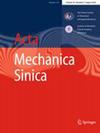Computational modeling and simulation for endovascular embolization of cerebral arteriovenous malformations with liquid embolic agents
Abstract
Endovascular embolization of arteriovenous malformations (AVMs) in the brain usually requires injecting liquid embolic agents (LEAs) to reduce blood flow through the malformation. In clinical procedures, the feeding artery into which the LEAs are injected, and the amount of LEAs needs to be carefully planned preoperatively. Computational fluid dynamics can simulate the injecting process of LEAs in nidus and evaluate the therapeutic effects of different procedures preoperatively. Applying a porous media model avoided the difficulties of geometric modeling of AVMs, and the complex vascular network structure within the nidus was reproduced. The multi-phase flow was applied to simulate the interaction between LEAs and blood. The viscosity of LEAs is determined by the concentration of its solute ethylene-vinyl alcohol copolymer (EVOH). The diffusion process of the solvent dimethyl sulfoxide (DMSO) was calculated by solving the species transport equation. The coagulation of LEAs was simulated by constructing the relationship between the concentration of EVOH and viscosity. The numerical simulation method of LEAs for injection and coagulation was tested on two patient-specific AVMs. The calculations predicted the flow direction of the LEAs in the nidus. The morphology of the injected LEAs could be well visualized by 3D rendering. Quantitative analysis was conducted, including flow rate changes at the feeding arteries and draining veins. The embolization process of AVMs with LEAs can be simulated by computational fluid dynamics (CFD) methods to show the therapeutic effects of different embolization procedure planning, the optimal treatment plan can be determined.

 求助内容:
求助内容: 应助结果提醒方式:
应助结果提醒方式:


